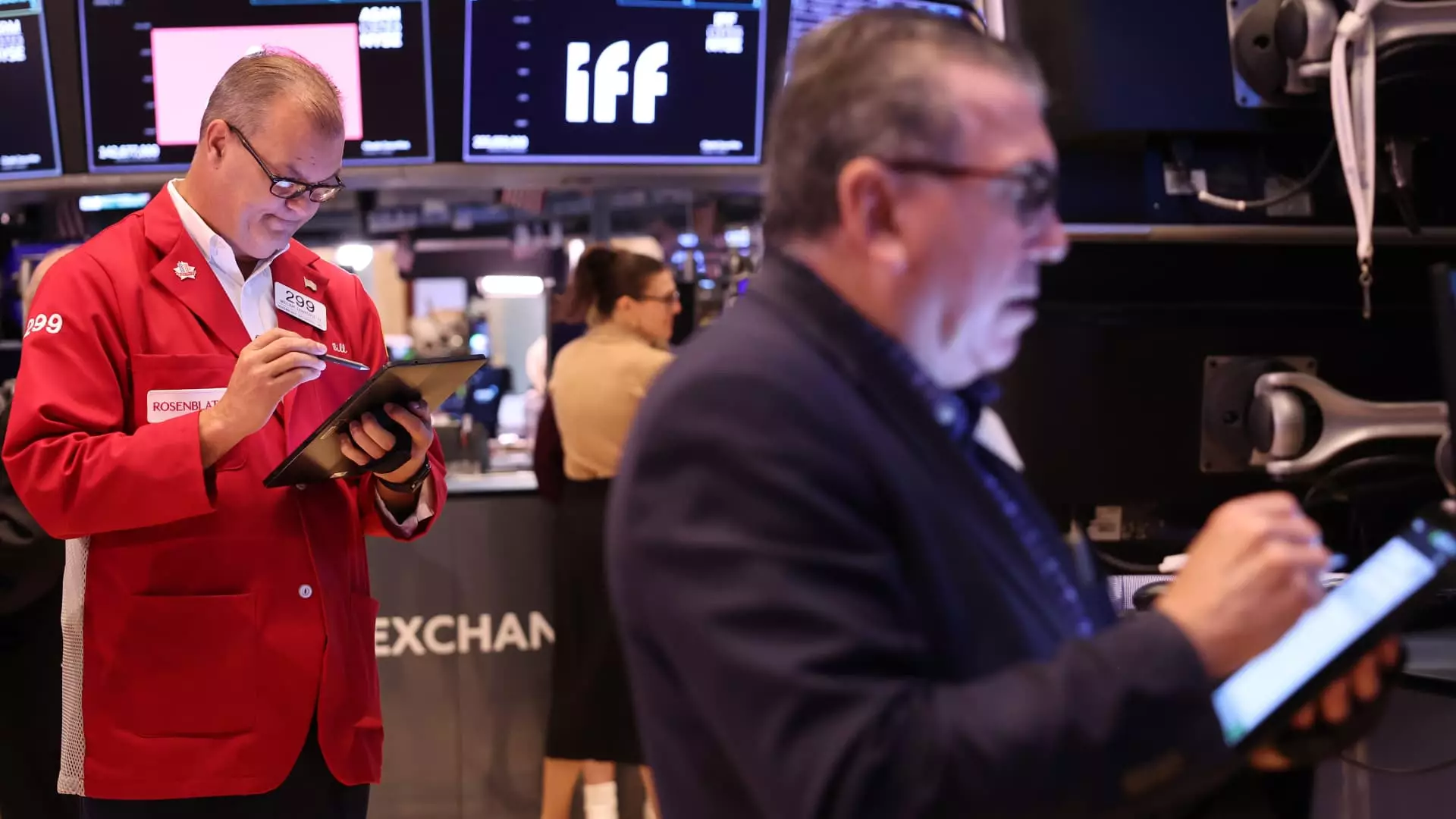The financial markets are always a dynamic landscape, marked by fluctuations that evoke excitement and caution in equal measure. The daily newsletter “Stocks @ Night” provides instant insights into the movements of major stocks and overarching market trends as trading comes to a close. This piece aims to delve into the recent statistics from November, focusing on the noteworthy performances of several stocks and sectors while forecasting what might lie ahead.
On an exhilarating note, the Dow Jones Industrial Average recently surpassed the significant threshold of 43,000 for the first time, signifying a surge in investor confidence and market resilience. The sense of optimism reverberates across various sectors, particularly technology and banking. As companies aim for recovery and growth, the Dow’s performance could bookmark a transformative moment for American businesses, especially as it approaches last year’s record high of $140.76.
Particularly in focus is Nvidia, which is edging closer to that all-time high following a commendable trading day, closing at $138.07. The surge is emblematic not just of Nvidia’s standing but highlights a broader trend within the semiconductor industry, which has seen varied performances across key players.
The month of October has been especially lucrative for Nvidia, marking nearly a 14% upswing. Such resilience reflects the ongoing demand for AI-related products and advancements, a theme echoed across the semiconductor sector. The VanEck Semiconductor ETF (SMH), a barometer for industry performance, also charted a 6.5% increase this month, reaffirming the sector’s crucial role in the broader technological ecosystem.
Meanwhile, Intel’s resurgence adds another layer to the narrative. With a remarkable 19% rally this past month, the stock is demonstrating vitality despite facing significant competitive pressures. Micron Technology follows suit, showcasing a 19% increase while reinforcing the idea that demand for memory-related products is on the rise. This coupled with insights from Micron’s CEO, Sanjay Mehrotra, indicates a narrative of robust demand spurred by emerging technologies like AI and the increasing reliance on mobile devices and personal computers.
Turning our attention to the banking sector, we note varying trajectories among major players. Notably, Goldman Sachs has surged nearly 9% over the past three months, highlighting its current standing at $522.75—an indicator of regained investor trust during a volatile period. Conversely, Bank of America remains relatively stagnant, grappling with an approximate 6% decline from its July pinnacle.
Citigroup is demonstrating incremental gains with a 2.3% rise over the last quarter, while PNC Financial shines brighter with an impressive 12% increase. The juxtaposition of these performances suggests that certain institutions may be capitalizing on shifts in consumer behavior and economic recovery while others may be adjusting to new market realities.
United Airlines, too, represents a substantial recovery story, showcasing an astounding 42% increase over three months. Factors contributing to this resurgence may include a gradual return to travel normalcy, bolstered by factors such as pent-up consumer demand and operational adjustments made during pandemic-induced downturns.
In the realm of digital currencies, Bitcoin continues its upward trajectory, boasting a 10% increase this month to reach approximately $66,100. The volatility and speculative nature of cryptocurrency markets remain prevalent but are underscored by renewed interest likely influenced by economic uncertainties and external market events. Companies directly linked to Bitcoin like MicroStrategy and Riot Platforms have also enjoyed notable gains, rallying 42% and 21%, respectively. This serves to illustrate how cryptocurrency markets often mirror broader economic sentiments, portraying both risk and opportunity.
As we navigate these current trends, it is vital to remain observant of market signals. Economic forecasts, investor sentiment, and overarching geopolitical factors will undoubtedly influence future performance trajectories. The proximity of major stocks to record highs, coupled with fluctuating performances across different segments, may dictate shifting investor strategies as we close out the year.
This unique snapshot into stock performances encapsulates a moment of both volatility and opportunity. As major sectors converge and diverge, watchful investors eager for clues will continue to scrutinize developments in the ever-evolving market landscape. Only time will reveal how these dynamics will play out in the face of changing global economic conditions.

